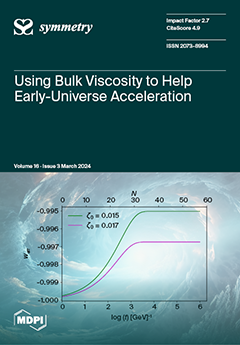This study presents a subclass
of bi-univalent functions within the open unit disk region
. The objective of this class is to determine the bounds of the Hankel determinant of order 3, (
[...] Read more.
This study presents a subclass
of bi-univalent functions within the open unit disk region
. The objective of this class is to determine the bounds of the Hankel determinant of order 3, (
). In this study, new constraints for the estimates of the third Hankel determinant for the class
are presented, which are of considerable interest in various fields of mathematics, including complex analysis and geometric function theory. Here, we define these bi-univalent functions as
and impose constraints on the coefficients
. Our investigation provides the upper bounds for the bi-univalent functions in this newly developed subclass, specifically for
n = 2, 3, 4, and 5. We then derive the third Hankel determinant for this particular class, which reveals several intriguing scenarios. These findings contribute to the broader understanding of bi-univalent functions and their potential applications in diverse mathematical contexts. Notably, the results obtained may serve as a foundation for future investigations into the properties and applications of bi-univalent functions and their subclasses.
Full article





